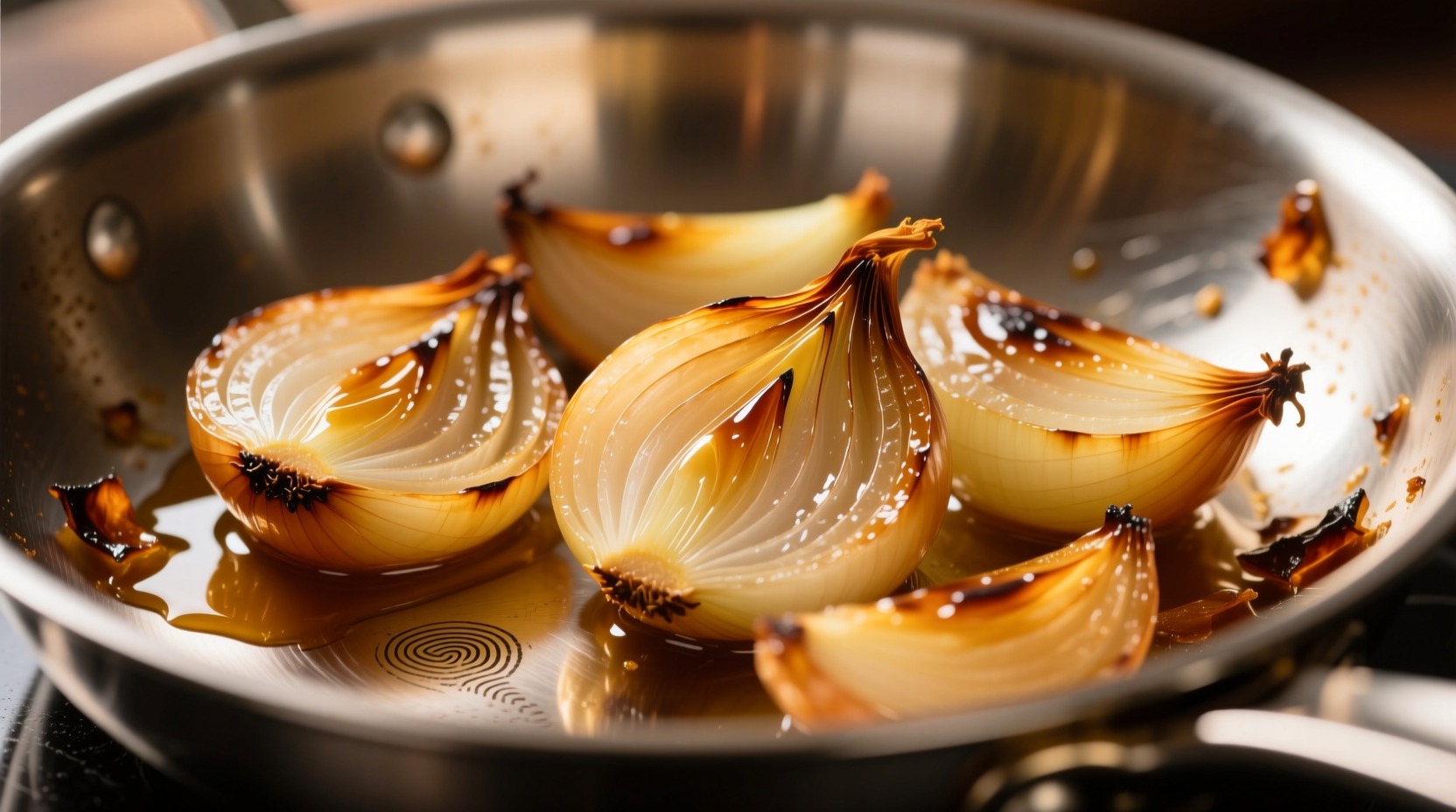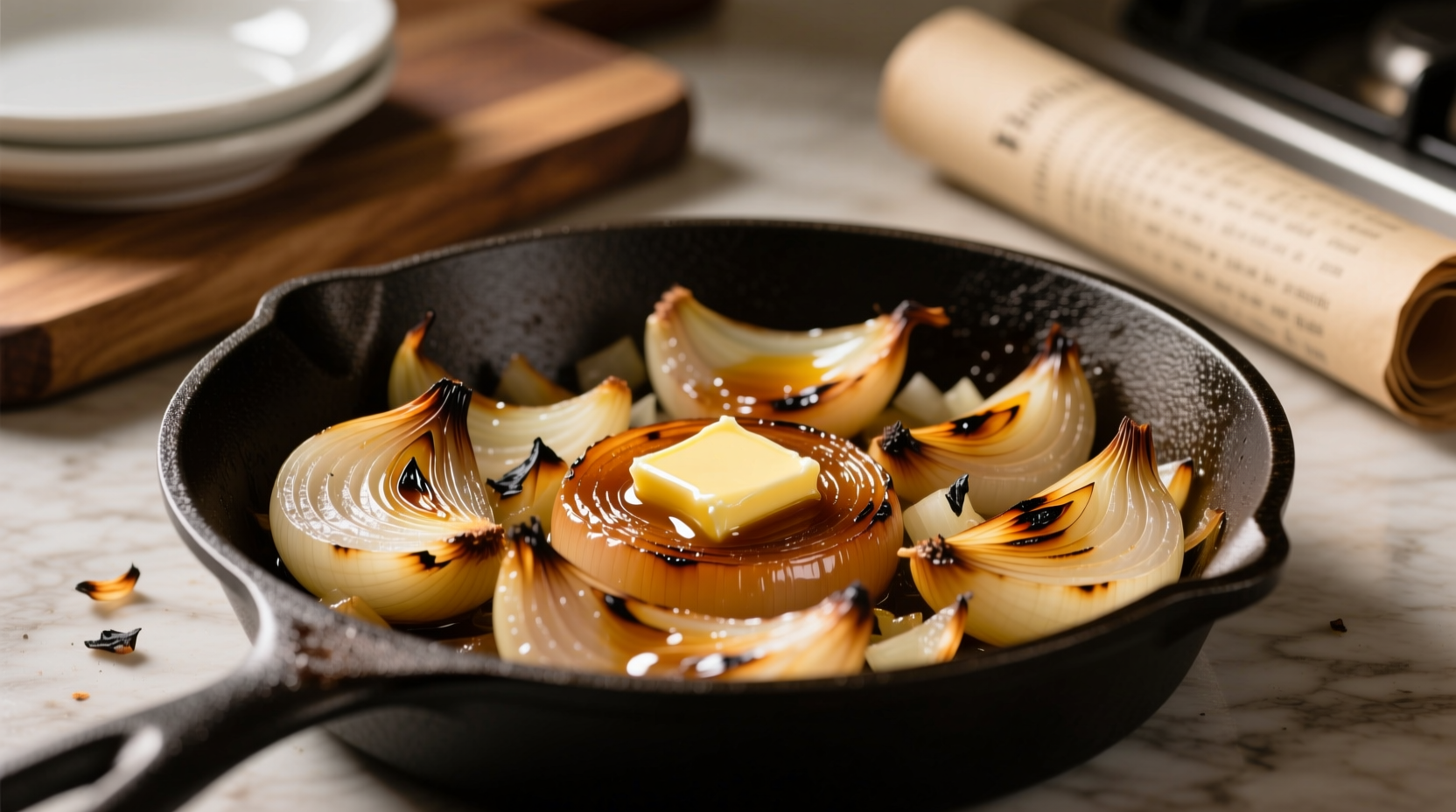When onions hit heat, a remarkable transformation occurs. That sharp bite you experience with raw onions fades as volatile sulfur compounds evaporate, while natural sugars concentrate through caramelization. This isn't just about flavor—cooking actually enhances the bioavailability of quercetin, a potent antioxidant linked to reduced inflammation and cardiovascular benefits. But not all cooking methods deliver the same results, and understanding the science helps you maximize both flavor and nutrition in your dishes.
The Chemical Transformation: What Happens When Onions Cook
Onions contain approximately 1.5% sugar by weight, primarily fructose, glucose, and sucrose. When exposed to heat, these sugars undergo the Maillard reaction—a chemical process between amino acids and reducing sugars that creates hundreds of new flavor compounds. Simultaneously, the enzyme alliinase, responsible for raw onion's pungency, becomes denatured at temperatures above 140°F (60°C), significantly reducing the sharp bite.
| Compound | Raw Onion | Cooked Onion (Sautéed) | Change |
|---|---|---|---|
| Quercetin | 3.5 mg/100g | 12.7 mg/100g | +263% bioavailability |
| Sulfur Compounds | High | Reduced by 60-80% | Significant decrease |
| Vitamin C | 7.4 mg/100g | 3.2 mg/100g | -57% retention |
| Dietary Fiber | 1.7 g/100g | 2.1 g/100g | +24% concentration |
According to research published in the Journal of Agricultural and Food Chemistry, cooking onions for 5-7 minutes at 250°F (121°C) increases quercetin bioavailability by 263% compared to raw onions. This occurs because heat breaks down cell walls, releasing bound quercetin glycosides that our bodies can then absorb more efficiently.
Temperature Timeline: The Stages of Onion Transformation
Understanding the precise temperature stages helps you control the final flavor profile:
- 104-122°F (40-50°C): Enzymes begin breaking down, reducing pungency
- 140°F (60°C): Alliinase enzyme denatures completely—raw bite disappears
- 212°F (100°C): Water evaporates, sugars concentrate
- 284-320°F (140-160°C): Maillard reaction begins creating complex flavors
- 356°F (180°C): Caramelization accelerates—watch for burning

Practical Cooking Methods Compared
Each cooking technique delivers distinct results for different culinary applications:
Caramelizing Onions: The Flavor Builder
True caramelization requires patience—typically 45-60 minutes over medium-low heat. The slow process allows sugars to develop complex flavors without burning. Professional chefs often add a pinch of baking soda (1/8 teaspoon per pound of onions) to raise pH, accelerating the Maillard reaction while preserving texture. This technique creates the rich, sweet base essential for French onion soup, savory tarts, and gourmet burgers.
Sautéing: The Quick Flavor Enhancer
For most recipes requiring "cooked onions," sautéing is ideal. Cook sliced onions for 5-8 minutes over medium heat until translucent but still slightly firm. This method preserves some texture while mellowing the sharpness—perfect for stir-fries, frittatas, and pasta sauces. The American Journal of Clinical Nutrition notes that this shorter cooking time retains more vitamin C than prolonged caramelization while still increasing quercetin bioavailability.
Boiling: The Mellowing Technique
Boiling onions for 10-15 minutes significantly reduces sulfur compounds, creating an extremely mild flavor ideal for soups, stews, and baby food. However, this method leaches water-soluble nutrients into the cooking liquid, so using the broth in your recipe maximizes nutritional retention.
Context Boundaries: When to Cook vs. When to Use Raw
Understanding the appropriate context for cooked onions prevents culinary missteps:
- Always cook onions for dishes requiring sweet, mellow base notes: soups, stews, sauces, meatloaf
- Use raw onions when you want sharp, pungent flavor: salsas, salads, sandwiches, garnishes
- Partially cook then finish raw for layered flavor: start onions in pan, then add raw slices at the end
- Avoid overcooking when texture matters: quick sauté preserves bite for stir-fries
The USDA National Nutrient Database confirms that cooked onions maintain their prebiotic fiber content (fructooligosaccharides) which supports gut health, making them valuable even when other nutrients decrease slightly during cooking.
Mastering Perfect Cooked Onions: Pro Techniques
Follow these evidence-based steps for consistently excellent results:
- Choose the right onion: Yellow onions (like Vidalia) have higher sugar content ideal for caramelizing; red onions work better for quick sautés
- Cut uniformly: 1/8-inch slices ensure even cooking—thicker pieces won't caramelize properly
- Start with cold pan: Add onions to cold oil, then heat gradually for more even cooking
- Control moisture: Add 1 tablespoon water when onions start sticking to deglaze without steaming
- Finish with acid: A splash of balsamic vinegar or lemon juice after cooking balances sweetness
For restaurant-quality results, the Culinary Institute of America recommends adding a small amount of sugar (1 teaspoon per pound of onions) during the last 10 minutes of caramelization to boost the Maillard reaction without burning.
Common Cooking Mistakes to Avoid
Even experienced cooks make these errors that compromise flavor and nutrition:
- High heat cooking: Causes uneven browning and burning before proper caramelization occurs
- Overcrowding the pan: Creates steam instead of allowing proper browning
- Stirring too frequently: Prevents the development of fond (those delicious browned bits)
- Adding salt too early: Draws out moisture, prolonging cooking time (add after 5 minutes)
- Using old onions: Sprouted or soft onions have degraded sugar content, affecting caramelization
Research from the University of California, Davis shows that properly caramelized onions contain higher levels of beneficial organosulfur compounds than improperly cooked ones, making technique crucial for both flavor and health benefits.
Integrating Cooked Onions into Your Cooking
Maximize the flavor potential of cooked onions with these professional applications:
- Flavor base: Use caramelized onions as the foundation for sauces, gravies, and braises
- Texture contrast: Combine quick-sautéed and caramelized onions in the same dish
- Freeze for convenience: Portion cooked onions in ice cube trays with oil for instant flavor boosts
- Enhance proteins: Mix finely chopped caramelized onions into burger patties or meatloaf
- Sweet-savory balance: Add to fruit-based chutneys and relishes for complexity











 浙公网安备
33010002000092号
浙公网安备
33010002000092号 浙B2-20120091-4
浙B2-20120091-4